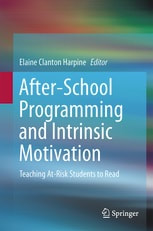With the Internet, information is a mere fingertip away. Yet, we must remember that anyone can post information about reading on the Internet which unfortunately leads to lots and lots of misinformation. There is not a “fact checker” for educational writing as there is for political statements; even though, we desperately need one. In academia, research journal articles must pass a review to ensure that the information in the article is correct. No, this is not always perfect, but reviews do ensure a certain degree of imparting correct information that the Internet does not give us.
One example of how this problem affects children in the classroom comes from a well-known publisher of school curriculum. Houghton Mifflin, a nationwide publisher and distributor of reading curriculum to public schools, made the following summary statement of the findings of the 2000 National Reading Panel Report: “Synthetic phonics instruction is the most effective approach.” This statement was made on page 2 of their summary entitled: How Houghton Mifflin Reading Meets the Criteria for Effective Reading Instruction, as Established By The National Reading Panel Report. This summary distributed to schools comes from Houghton Mifflin’s marketing department—not their research department.
Unfortunately, if you go back to the actual report, the National Reading Panel’s findings are quite different from the Houghton Mifflin summary. On page 2-93, the reading panel states, “systematic phonics approaches are significantly more effective than non-phonics.”
First, systematic and synthetic phonics are two totally different teaching methods. Synthetic phonics teaches students to sound each letter sound and letter combination individually and then to blend these sounds back into word pronunciations. Systematic phonics teaches students in an explicit sequence.
Dr. Timothy Shanahan, member of the National Reading Panel, clarifies the difference:
“The NRP concluded that early, explicit, systematic phonics teaching gives kids a learning advantage. Systematic, not synthetic.”
Second, the reading panel was comparing whole language and phonics. The reading panel’s conclusion is quite different than Houghton Mifflin’s conclusion. Yes, reading the actual National Reading Panel’s report is cumbersome and it may be difficult for the general population to understand. Still, when we summarize research or restate research findings, we must make absolute certain that we summarize and restate those findings accurately. This one statement by Houghton Mifflin has led many people to conclude that the National Reading Panel said synthetic phonics is best, when in fact, that is not what the National Reading Panel concluded from their research. Yes, it makes a huge difference to at-risk students who are failing in reading when you prescribe a teaching method that has been proven to be ineffective.
Another fact from the actual National Reading Panel report on p. 2-94 that is often ignored is their statement that “phonics instruction failed to exert a significant impact on the reading performance of low achieving readers in second through sixth grade….” The panel did not draw a definite conclusion from this research data, but said more research was needed before conclusions could be made. Yet, their findings did highlight that problems do exist between at-risk readers and the phonics teaching method. We’ll talk more about this later. At this point, I only want to highlight that sometimes Internet reports and summaries do not actually report the total findings; therefore, confusion and misinformation abounds. Confusion and misinformation often keep children from learning to read. Therefore, when we report on scientific research findings, we must report all of the findings, not just the findings that support the teaching method that you think is best.
If we are to teach students how to read (and we can), we must learn to read and report scientific findings correctly. Such confusion on the part of adults can lead to failure for many students.
If an administrator, school, or teacher believe the National Reading Panel actually said that synthetic phonics is the best way to teach children to read, then they formulate classroom instruction based upon this misstatement of the facts, such confusion and misstatements become a failing policy decision. Children are often irrevocably harmed by such decisions. Look once again at the fact that reading failure increased in 2019. [see my blog post from 10-31-19]
Another point of confusion that can harm children struggling to read in the classroom is Internet writers that claim a link with scientific research, but in actuality, make claims that are not supported by scientific research.
Confusion abounds on the Internet. Anyone can write a blog or tweet a comment. No one checks for accuracy. So, how do you know when you are reading accurate information on the Internet or when you’re just reading someone else’s opinions?
Some journalists and other writers, who may write and publish on the Internet, write to support their particular viewpoint rather than just reporting the facts. We all use research to support our point of view or our theory, but we must make sure that we report all of the facts and let our readers draw the conclusions. When journalists or Internet writers do not report their actual research but just give generalized summaries, they often distort research findings and/or misrepresent what a researcher said.
One example comes from a well-known educational journalist and writer on reading, Emily Hanford. Ms. Hanford states, “They [children] need explicit, systematic phonics instruction. There are hundreds of studies that back this up.”
Remember, Ms. Hanford is a journalist and she did admit that this is an opinion article, but then she states that “hundreds of studies” claim systematic phonics instruction is what these children need. Her cited research does not back up her claim that “hundreds of studies” insist that systematic phonics is the answer to teaching children how to read. If you click on the link she provides, the research evidence is not there. Her list of “hundreds of studies” actually includes 5 actual studies, one concerning IQ scores, one on textbooks, a review article, the 2000 Reading Panel Report, and a 1996 study on “phonological deficits.” None of the listed “studies” (other than the National Reading Panel Report) confirm that “systematic phonics instruction” is best or even good. The remainder of her list includes commentary style articles—editorial comments are not scientific studies and cannot be classified as such.
Yet, this article by Ms. Hanford is published and readily available. Such misinformation is dangerous to children struggling to learn to read, especially when people take the statement “hundreds of studies” as true without checking the sources.
If you can find “hundreds of studies,” particularly well researched scientific studies, that claim systematic phonics instruction is what children need to become successful readers, then I want to read those studies. When opinion pieces make unsupported claims most readers do not go back and search for verifiable research that supports such claims. Confusion and misinformation result.
Confusion and misinformation have caused children to struggle in school and fail in reading. This is just one example; there are many. Confusion abounds in reading education.
This is one of the reasons that my blog posts give you direct quotes and links to the actual research studies. I want you to have the facts. I want you to be able to verify every single statement that I make.
Next, we will look at some of these research findings for each of the teaching methods used in the classroom today. Let’s search for the truth because when we use false information or incorrect information, our children pay the price. Reading failure is too high a price to pay for confusion, misinformation, and misrepresentation of the facts. Our children deserve better. Get the facts. Do not just assume because something is in print on the Internet that it is correct. Do not simply assume because someone presents credentials that what they say is correct. Dig more deeply. Insist upon Internet writers that provide you with links to the actual research that they are talking about. Don’t just assume someone is correct--not even me. Search for the facts; don’t let confusion destroy a child’s chance to learn to read.


 RSS Feed
RSS Feed
